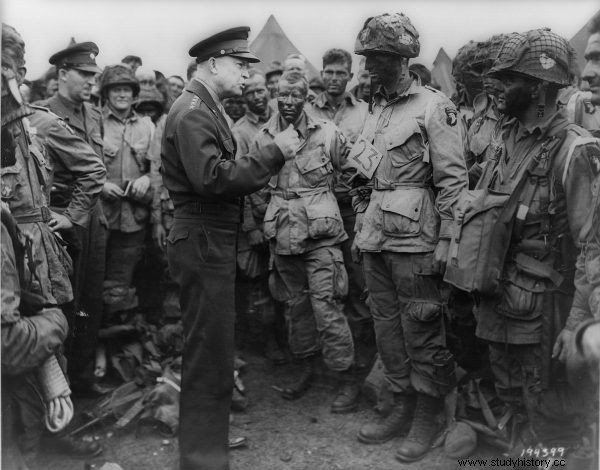An American soldier sent to battle in World War II knew at least that his family would not be left without a penny. The government provided ample compensation. And he made money on it. And how much could the soldiers themselves and their loved ones get?
The American army tried to comprehensively take care of its soldiers. Especially if they were conscripted. In October 1940, when World War II - though without the participation of the US - had been going on for over a year, Congress passed the National Service Life Insurance Act. Thanks to it, soldiers serving in the US Army could take out insurance in the event of death or disability as a result of broadly understood warfare.
Waiting to jump
How high was the amount of war insurance? Major Richard Winters writes about the case in his memoirs "Apart from Kompania of Brothers". He reports how a paratroopers company waited for a drop in France. It was late spring 1944. It was already known then that D-Day would soon come. It was only a matter of time before an order came, stating when the barges and planes would depart.
The military includes the issue of policy in the description of the pre-battle tension:
For everyone who attended, "D" day was like no other in history. The expectation of a $ 10,000 jump was something we had never experienced before. $ 10,000 was the mandatory statutory insurance amount for each soldier.
Indeed, the government guaranteed American soldiers the possibility of insurance. Anyone employed in the army could buy a policy thanks to the National Service Life Insurance program. The Act of 1940 provided that any member of the armed forces was eligible for insurance, without a medical examination or presentation of a medical history. It was only necessary to submit an appropriate application and pay the premium regularly. This option was also used by the future president, John F. Kennedy, who served on a speedboat during World War II.

Application by John Fitzgerald Kennedy for a policy of $ 10,000
Soldiers deciding to use the program had several options to choose from. The policy could last five years, several dozen years, or even a lifetime. The insurance amount ranged from $ 1,000 to $ 10,000. The amount of the contribution depended, inter alia, on the age. An average was paid $ 5.5 a month for each thousand of the sum of the expected maximum payout . In the event of death, the money obviously went to the immediate family of the deceased.
Great War Insurance
The 1940 program was not the first of its kind in the United States. Government insurance for personnel serving in the US Army appeared earlier in 1917. With the United States joining the world war on April 6 this year, Congress passed a bill called the War Risk Insurance Act. Under it, for $ 5.75 a month, it was possible to purchase an annual renewable policy that provided assistance in the event of disability or death.
Such insurance allowed the soldiers to be paid a monthly pension until they regained their fitness for a maximum of 20 years. In 1918, the number of policies purchased under the program was over 4.5 million. Many of them were still active years after the war.
Amounts and numbers
Insurance guaranteed to fighters in World War II was very popular from the very beginning. Already in 1941, there were over 700,000 policies for less than two million personnel. Their number increased significantly after the US joined the war and the related expansion of the armed forces. In 1942, it was over 4.5 million. The peak came in 1944, when NSLI was used by nearly 16 million people, practically every member of the armed forces . In total, they were entitled to benefits of over $ 121 billion. In today's conditions, this is roughly equivalent to $ 3 trillion.
What were the costs of the soldiers in connection with the participation in the government program? For a 25-year-old, the monthly cost of a five-year policy worth $ 10,000 (which he could later extend for a lifetime) was $ 6.70. As can be deduced from Richard Winters' memoirs in the book "Apart from Kompania Braci", it was not a small amount at all. "The private's salary was $ 21 a month, much less than what I was earning before I signed up," relates the major.

General Dwight D. Eisenhower speaks to paratroopers from 101st Division on the eve of D-Day
Importantly, the insurance covered not only death "on the front line", but generally "on duty". So it also included accidents during exercises, maneuvers or preparations. There were no administration fees and no additional commissions.
What was the financial summary of the government guaranteed war insurance? For the period from 1940 to the end of 1949, the sum of contributions paid in amounted to over 9 billion dollars. By then… only a fraction of that sum:$ 1.5 billion had been paid out . However, a lot of payments - already for veterans - were made over the next few years.
